
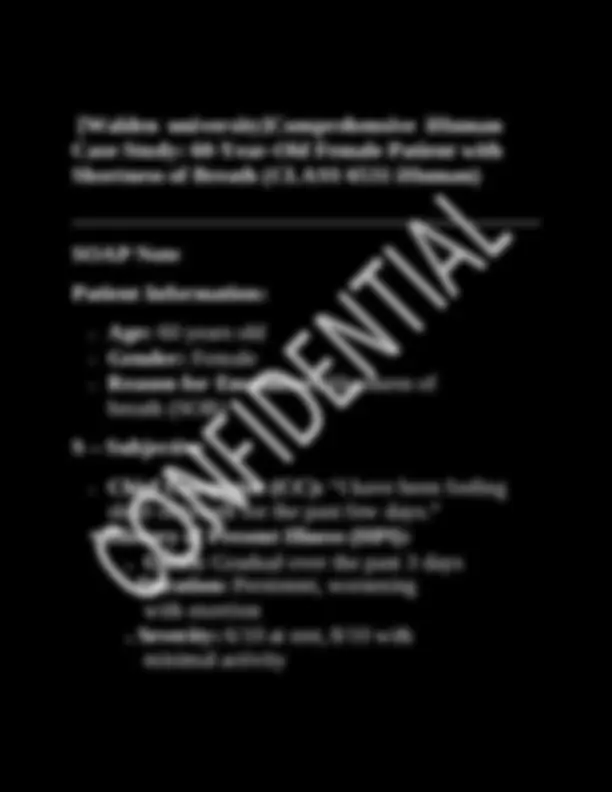
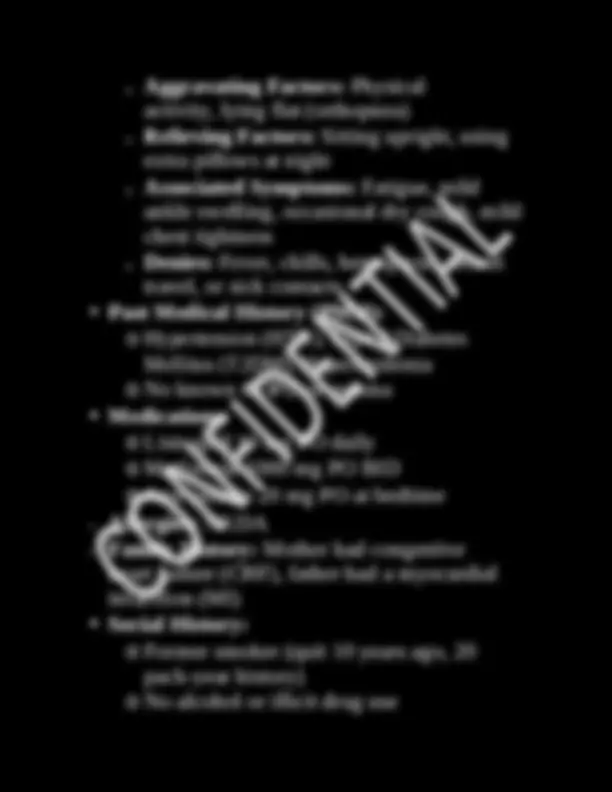
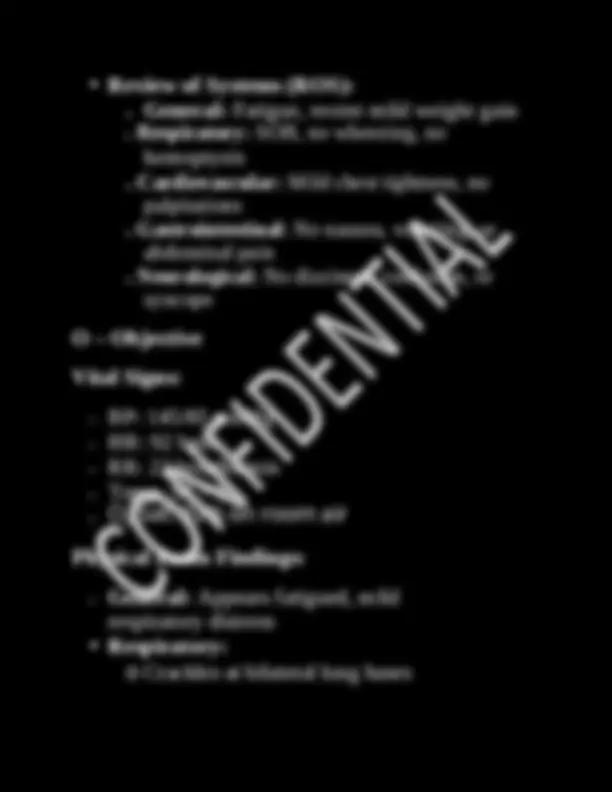
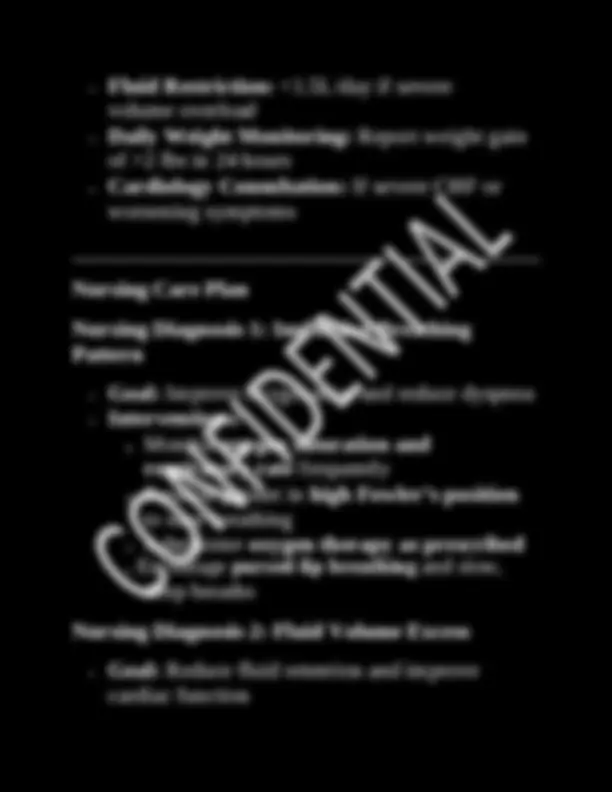
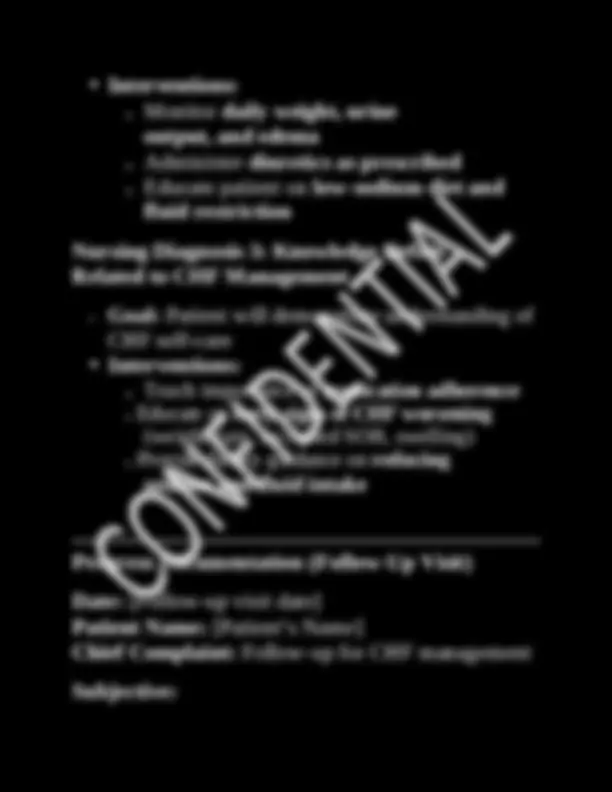
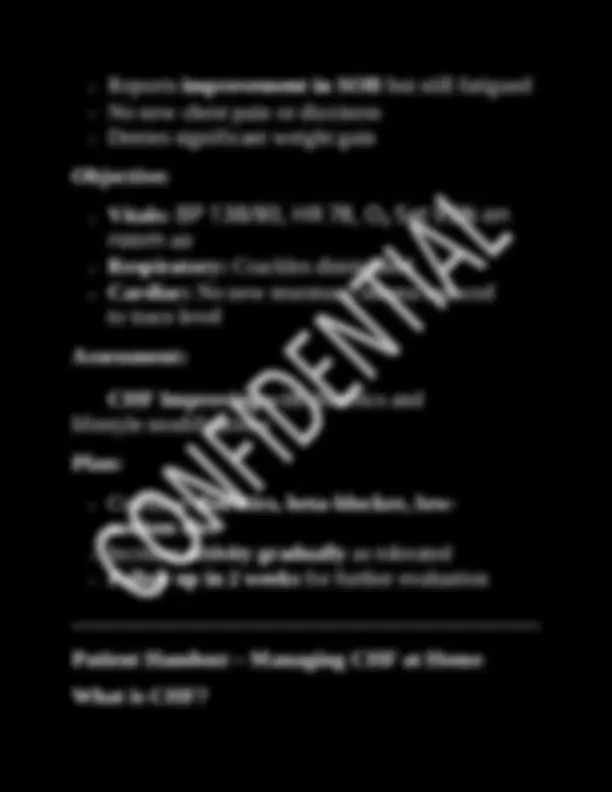
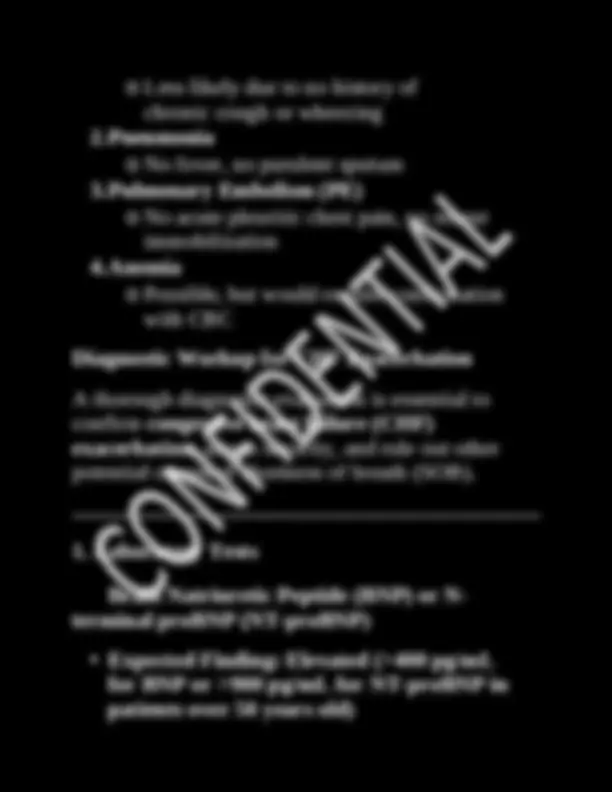
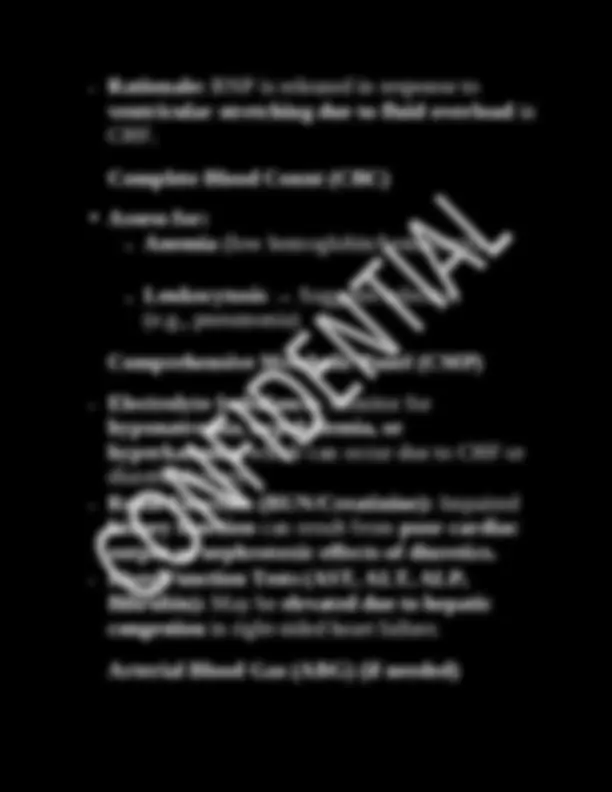
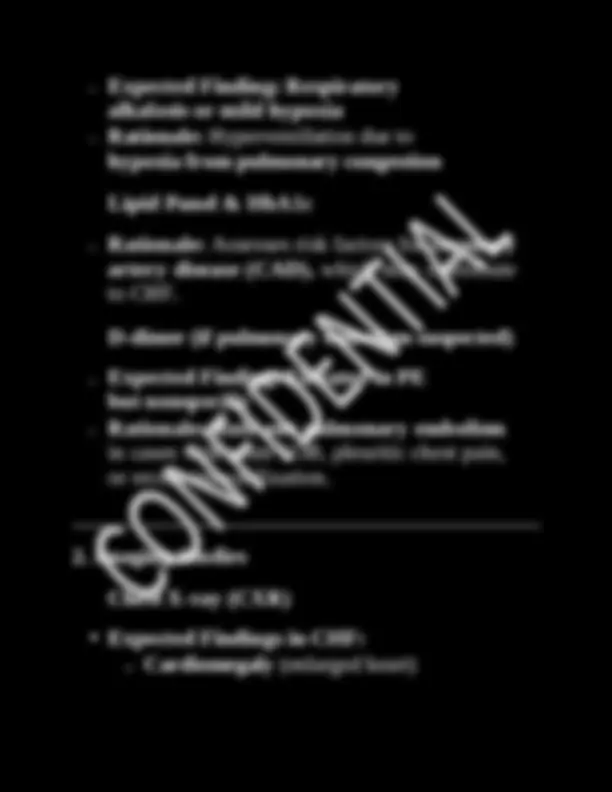
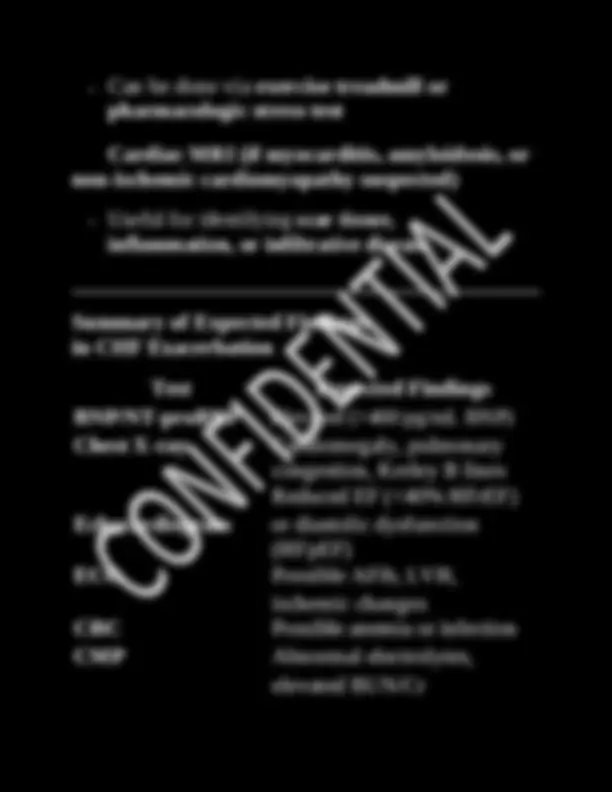
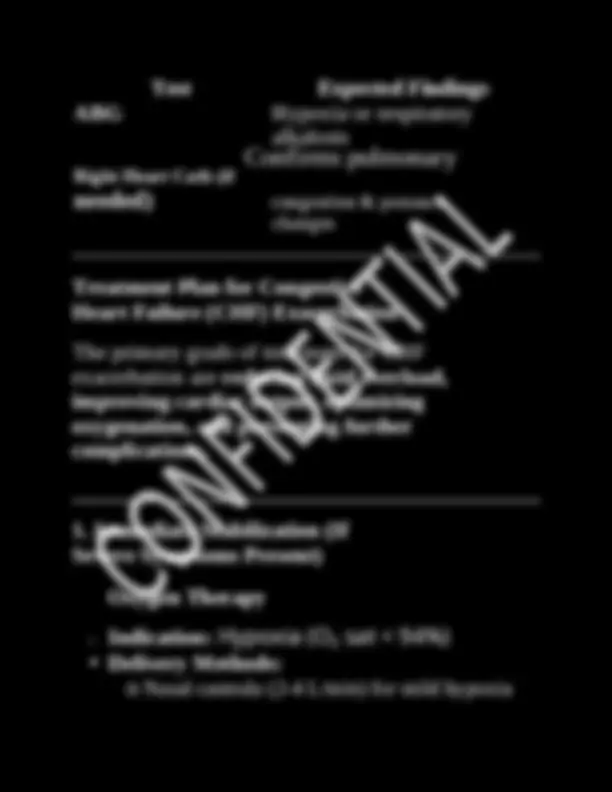
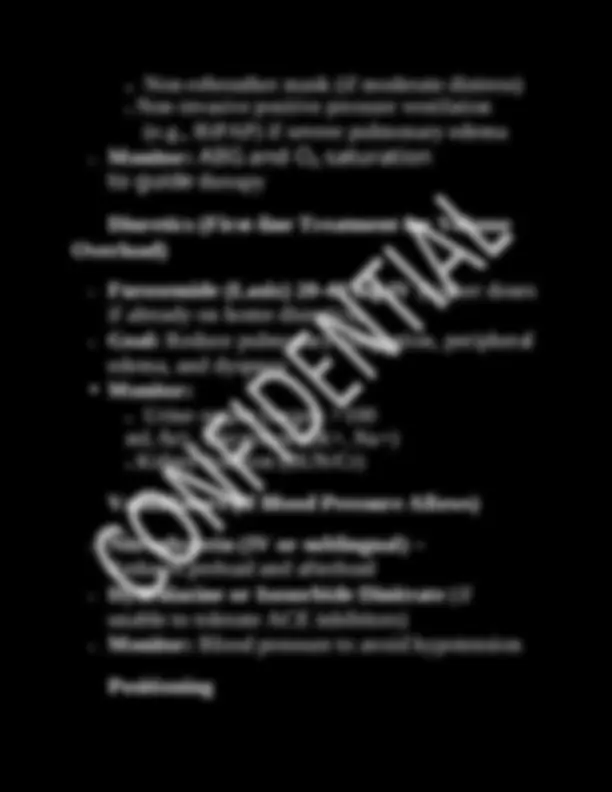
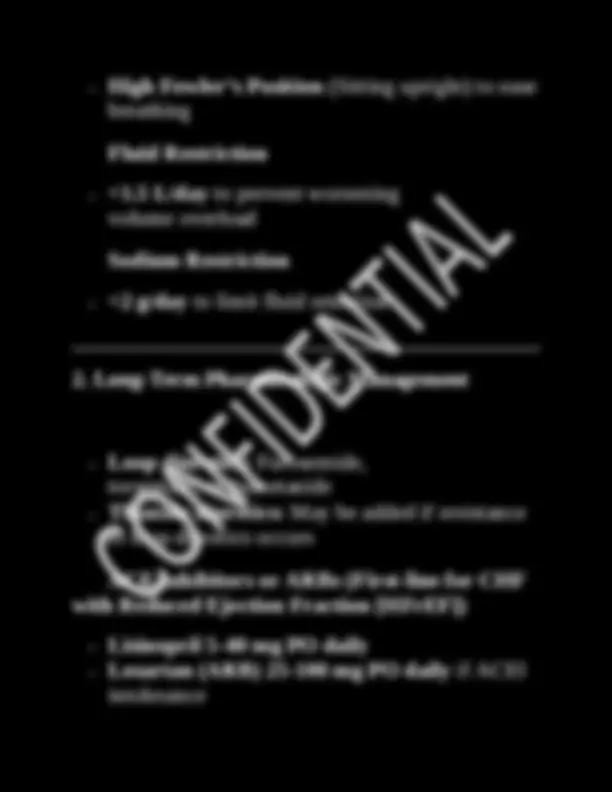
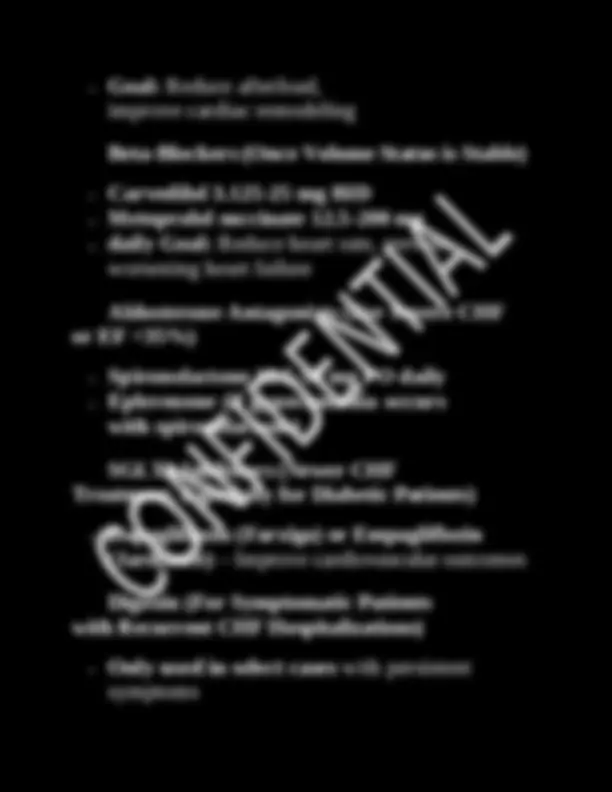
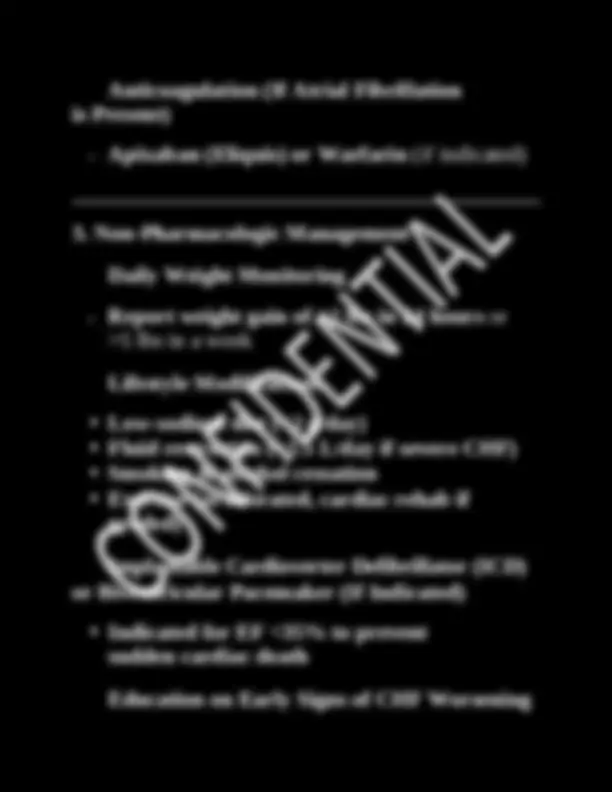
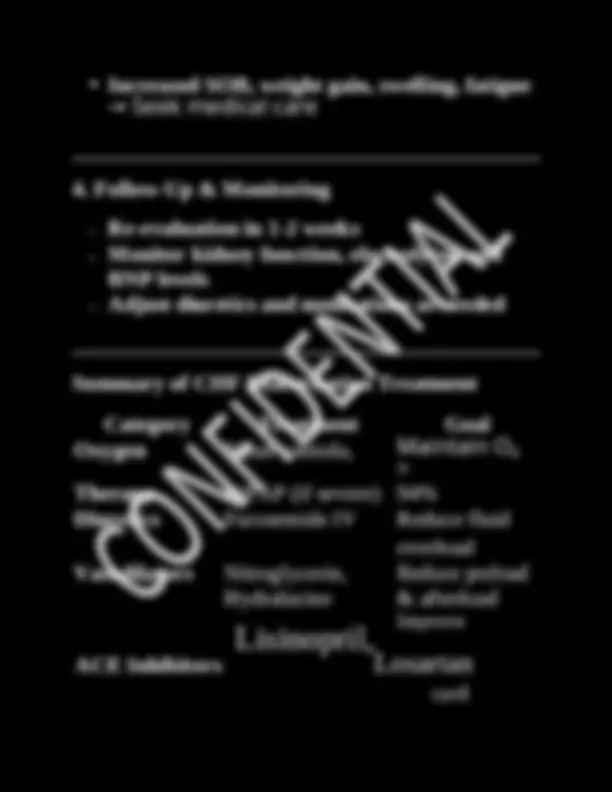

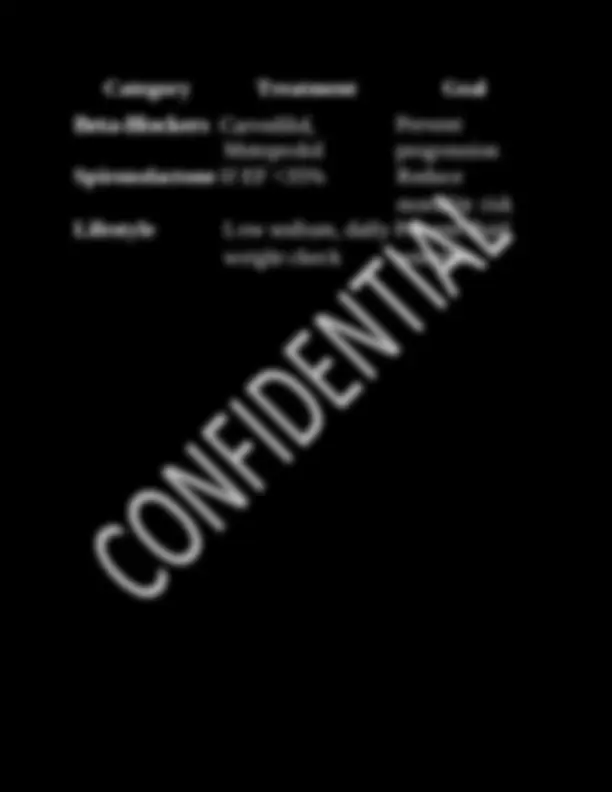


Study with the several resources on Docsity

Earn points by helping other students or get them with a premium plan


Prepare for your exams
Study with the several resources on Docsity

Earn points to download
Earn points by helping other students or get them with a premium plan
Community
Ask the community for help and clear up your study doubts
Discover the best universities in your country according to Docsity users
Free resources
Download our free guides on studying techniques, anxiety management strategies, and thesis advice from Docsity tutors
This case study presents a comprehensive analysis of a 60-year-old female patient experiencing shortness of breath. The document details the patient's medical history, symptoms, physical examination findings, and diagnostic workup. It outlines the primary diagnosis of congestive heart failure (chf) exacerbation and provides a detailed explanation of the rationale behind the diagnosis. The document also includes a nursing care plan, patient handout, and a summary of expected findings in chf exacerbation. This case study is valuable for students and professionals in the healthcare field, providing insights into the diagnosis, management, and treatment of chf.
Typology: Exams
1 / 26

This page cannot be seen from the preview
Don't miss anything!



















o Aggravating Factors: Physical activity, lying flat (orthopnea) o Relieving Factors: Sitting upright, using extra pillows at night o Associated Symptoms: Fatigue, mild ankle swelling, occasional dry cough, mild chest tightness o Denies: Fever, chills, hemoptysis, recent travel, or sick contacts
BP: 145/85 mmHg HR: 92 bpm RR: 22 breaths/min Temp: 98.7°F O₂ Sat: 92% on room air Physical Exam Findings:
Goal: Improve oxygenation and reduce dyspnea Interventions: o Monitor oxygen saturation and respiratory rate frequently o Position patient in high Fowler’s position to ease breathing o Administer oxygen therapy as prescribed o Encourage pursed-lip breathing and slow, deep breaths Nursing Diagnosis 2: Fluid Volume Excess
Vitals: BP 138/80, HR 78, O₂ Sat 95% on room air Respiratory: Crackles diminished Cardiac: No new murmurs, edema reduced to trace level Assessment: CHF Improving with diuretics and lifestyle modifications Plan:
Continue diuretics, beta-blocker, low- sodium diet Increase activity gradually as tolerated Follow up in 2 weeks for further evaluation Patient Handout – Managing CHF at Home What is CHF?
CHF occurs when the heart cannot pump blood effectively, leading to fluid buildup in the lungs and body. Key Symptoms to Monitor: Shortness of breath, especially when lying down Swelling in legs, feet, or abdomen Sudden weight gain (more than 2 lbs in 24 hours) Fatigue or dizziness Self-Care Tips: Weigh yourself daily and report weight gain > lbs Follow a low-sodium diet (<2g/day) Take medications exactly as prescribed Monitor fluid intake (if restricted by doctor) Avoid alcohol and smoking Emergency Warning Signs : Sudden severe SOB or chest pain Confusion or extreme fatigue Rapid weight gain (>5 lbs in 3 days)
o Less likely due to no history of chronic cough or wheezing 2.Pneumonia o No fever, no purulent sputum 3.Pulmonary Embolism (PE) o No acute pleuritic chest pain, no recent immobilization 4.Anemia o Possible, but would require confirmation with CBC Diagnostic Workup for CHF Exacerbation A thorough diagnostic evaluation is essential to confirm congestive heart failure (CHF) exacerbation, assess severity, and rule out other potential causes of shortness of breath (SOB).
o Pulmonary congestion or interstitial edema o Kerley B lines (signs of fluid overload) o Pleural effusion (if severe) Echocardiogram (Transthoracic Echocardiography – TTE)
o Left ventricular hypertrophy (LVH) → Suggests chronic hypertension or heart failure CT Pulmonary Angiography (CTPA) (if PE suspected)
Measures pulmonary artery pressure & cardiac output Helps differentiate between pulmonary hypertension and CHF
Test Expected Findings ABG Hypoxia or respiratory alkalosis Right Heart Cath (if
changes Treatment Plan for Congestive Heart Failure (CHF) Exacerbation The primary goals of treatment for CHF exacerbation are reducing fluid overload, improving cardiac output, optimizing oxygenation, and preventing further complications.
o Non-rebreather mask (if moderate distress) o Non-invasive positive pressure ventilation (e.g., BiPAP) if severe pulmonary edema